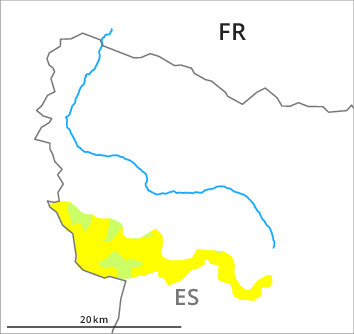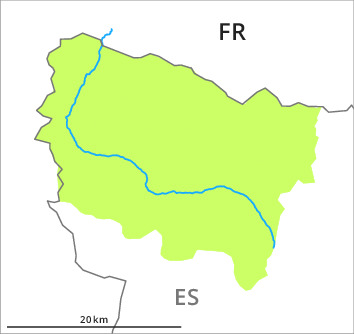
Danger level

2200m
Avalanche Problem

Wind-drifted snow

2200m


Persistent weak layer

2300m


Fresh wind slabs require caution. Weakly bonded old snow in particular on steep, rather lightly snow-covered shady slopes. Moist snow slides during the day are possible.
As a consequence of new snow and a light to moderate southerly wind, visible wind slabs formed on Sunday in particular adjacent to ridgelines on northwest, north and northeast facing slopes. These can be released easily, but they will be small in most cases.
Weak layers in the old snowpack can still be released in very isolated cases in particular on steep, rather lightly snow-covered shady slopes. Areas where the snow cover is rather shallow where hard layers are lying on a weakly bonded old snowpack are especially unfavourable. In very isolated cases the avalanches in these loacations are dangerously large.
As a consequence of warming during the day and solar radiation small moist snow slides are to be expected as the day progresses.
The current avalanche situation calls for meticulous route selection. Even a small avalanche can sweep winter sport participants along and give rise to falls.
Weak layers in the old snowpack can still be released in very isolated cases in particular on steep, rather lightly snow-covered shady slopes. Areas where the snow cover is rather shallow where hard layers are lying on a weakly bonded old snowpack are especially unfavourable. In very isolated cases the avalanches in these loacations are dangerously large.
As a consequence of warming during the day and solar radiation small moist snow slides are to be expected as the day progresses.
The current avalanche situation calls for meticulous route selection. Even a small avalanche can sweep winter sport participants along and give rise to falls.
Snowpack
>In particular from the border with Benasque via the border with Ribagorça to the border with Pallars up to 5 cm of snow, and even more in some localities, fell on Sunday above approximately 2000 m. The southerly wind has transported the new snow. High altitudes in shady places that are protected from the wind: The fresh wind slabs are lying on soft layers. In isolated cases various wind slab layers are lying on a weakly bonded old snowpack. This applies in particular on rather lightly snow-covered shady slopes and at elevated altitudes.
Sunny slopes: The surface of the snowpack has frozen to form a strong crust and will already soften in the late morning.
At low altitude from a snow sport perspective, in most cases insufficient snow is lying.
Sunny slopes: The surface of the snowpack has frozen to form a strong crust and will already soften in the late morning.
At low altitude from a snow sport perspective, in most cases insufficient snow is lying.
Tendency
Slight increase in danger of moist avalanches as a consequence of the moist air. The danger of dry slab avalanches will decrease.

